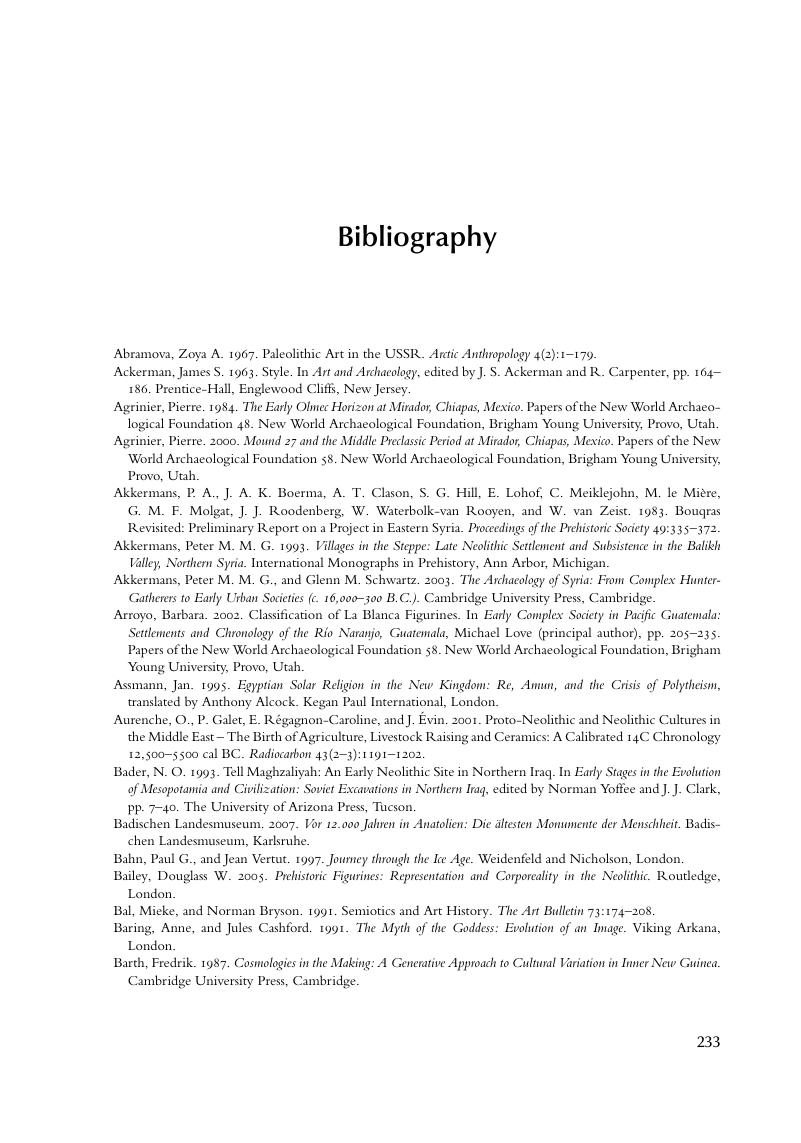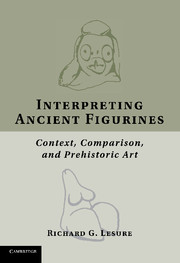Book contents
- Frontmatter
- Contents
- Figures and Tables
- Acknowledgments
- Introduction
- One Universalist Explanation and Prehistoric Figurines
- Two Comparison and Context
- Three The Questions We Ask of Images
- Four A Cross-Cultural Explanation for Female Figurines?
- Five Mesoamerican Figurines and the Contextualist Appeal to Universal Truths
- Six Figurines, Goddesses, and the Texture of Long-Term Structures in the Near East
- Seven On Figurines, Femaleness, and Comparison
- Notes
- Bibliography
- Index
- References
Bibliography
Published online by Cambridge University Press: 01 March 2011
- Frontmatter
- Contents
- Figures and Tables
- Acknowledgments
- Introduction
- One Universalist Explanation and Prehistoric Figurines
- Two Comparison and Context
- Three The Questions We Ask of Images
- Four A Cross-Cultural Explanation for Female Figurines?
- Five Mesoamerican Figurines and the Contextualist Appeal to Universal Truths
- Six Figurines, Goddesses, and the Texture of Long-Term Structures in the Near East
- Seven On Figurines, Femaleness, and Comparison
- Notes
- Bibliography
- Index
- References
Summary

- Type
- Chapter
- Information
- Interpreting Ancient FigurinesContext, Comparison, and Prehistoric Art, pp. 233 - 250Publisher: Cambridge University PressPrint publication year: 2011



